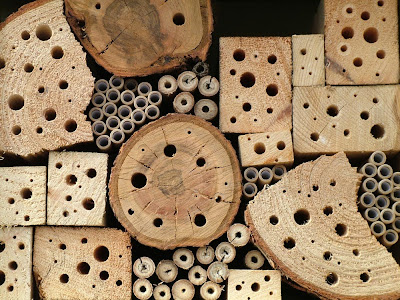It’s September so that means it’s time for the fall native plant sales and botanical geekiness to reign for the next 6 weeks or so in northern California. To celebrate this time of year, my next few posts will highlight some of my favorite California native plants for the garden. This post focuses on a few of the red-flowering hummingbird attractors which can all be found at the California Native Plant Demonstration Garden at the Old City Cemetery in Sacramento. I took all of the photos, so the usual copyright and all rights reserved, and request for permission to use the photos if you find them lovely applies.
 |
| Hummingbird sage (Salvia spathacea) |
Hummingbird sage is a great plant for dry shade. Native to the coast, interior central valley, and foothills from Napa to El Dorado down to Orange County. This grows in the Demonstration Garden under the shade of conifers. It is in shade for the first part of the day and gets some western sun in the afternoon for a few hours. Like most of the plants in the Demonstration Garden, it gets no supplemental water other than seasonal rain. Hummingbird sage makes babies via rhizomes; the basal clump of fragrant leaves gets about 10” to 12" tall with 24” or so tall flower stalks that bloom from about March to May. When the old leaves and flower stalks start to look ratty, pull them off to tidy up the plant. It has been growing in the Demonstration Garden since 1998 or so. I think I’ll go steal some babies for my own garden this weekend.
 |
| Fuchsia-flowering gooseberry (Ribes speciosum) |
This showy gooseberry is for you if you like beautiful plants that will rip the flesh off of your body if you are not careful. This little beast is found in coastal sage scrub and chaparral plant communities of coastal mountain areas from Napa to Baja California. The jewel-toned pendant flowers are some of the first arrivals in late winter and will bloom until about May. Bright red berries follow. The lush green foliage hides some vicious thorns. Even though this grows in part shade, by summer the foliage is looking pretty crispy in the Demonstration Garden, so give it a little extra water once a week in the summer and fall to keep it from going drought deciduous. Plant this where you need a barrier, and no animal or human will dare to go near it after their first encounter.
 |
| Scarlet bugler (Penstemon centranthifolius) |
Scarlet bugler is a neat little plant for full sun. It is native to dry slopes of the coast ranges and southern Sierras down to Mexico. The hot red flowers on 2’ to 4’ stalks contrast starkly against the 1’ to 2’ mound of gray-green stiff foliage. Blooms from April to July. Looks great in flower arrangements. Extraordinarily drought tolerant. It runs its course by midsummer and looks like a bunch of dried sticks by fall. Trim back the dead stems so it doesn’t look like a typical weedy native.
So get out to a plant sale this month, blow a few bucks on some natives, try not to kill them, and see what little critters will stop by and visit.
So get out to a plant sale this month, blow a few bucks on some natives, try not to kill them, and see what little critters will stop by and visit.
